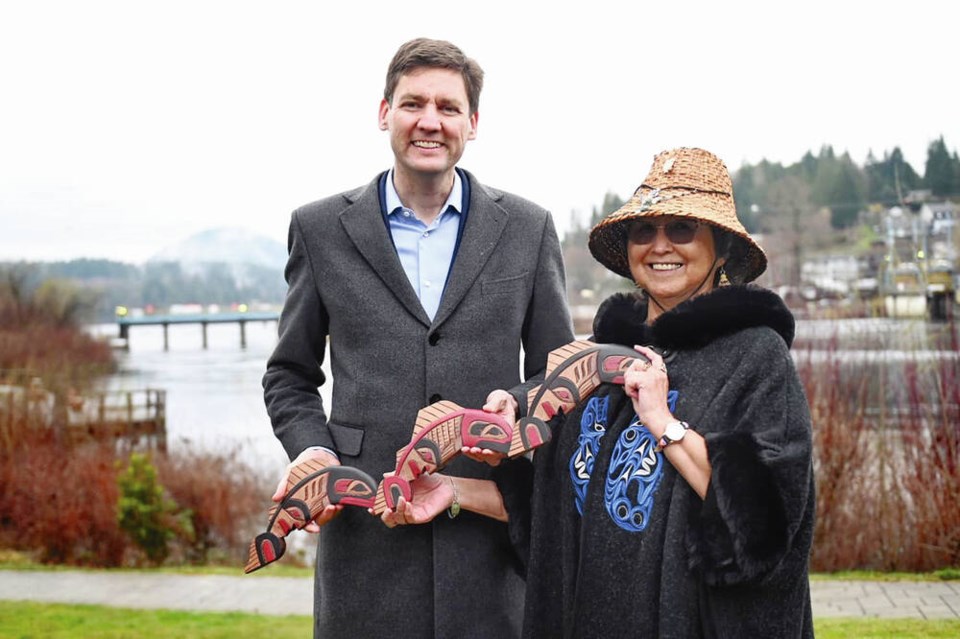On International Water Day, there was a celebration on the shores of Lake Cowichan.
Newly elected Cowichan Tribes Chief Cindy Daniels welcomed Premier David Eby to the territory and the province’s announcement of $14 million to replace an aging weir designed to improve the health and ecology of the beleaguered Cowichan River, which has been beset by drought and recent fish die-offs.
“For us, every day is Water Day. Hulitun tst tu qa’ — water is life,” said Daniels.
She said the well-being of the Cowichan people is inseparable from the well-being of the lake and river.
“I am pleased to recognize the provincial government for this essential funding to replace the Lake Cowichan weir, which combined with federal funding, will support more suitable water flows for the river, salmon and wildlife, and our communities,” said Daniels.
The province announced the $14 million as part of its budget last month to support Cowichan Tribes in their initiative to replace the 74-year-old Cowichan Lake weir. The money from the province will be added to $24 million provided to Cowichan Tribes through the federal disaster mitigation fund as well as $4 million given to the Cowichan Valley Regional District through the B.C. Salmon Restoration Fund that provided an engineering study on replacing the weir.
The higher weir will allow more water to be stored in Cowichan Lake during winter months and released in a controlled way into the Cowichan River in times of dryness or drought. Raised from its current 97-centimetre height by another 70 centimetres, the weir replacement is not expected to raise the lake levels above their annual high-water mark or impact the floodplain boundary, according to the province.
Huge pumps were brought in last year, as in previous years, to push water from the lake into the river. Last July, the alarm bells sounded when thousands of young salmon and trout were found dead in the river. However, calls to raise the weir go back more than 25 years.
“Last year, the iconic Cowichan River almost dried up as B.C. experienced record drought,” said Eby. “Only emergency measures and giant pumps were able to keep the river flowing during the rainy season.
“Replacing the Cowichan weir will allow more water to be captured, stored and used when needed. This will keep the river healthy, the fish swimming and better support the people of Cowichan during severe drought.”
Nathan Cullen, minister of water, land and resource stewardship, recognized the work of Cowichan Tribes and their partners in the Cowichan Valley Regional District and Cowichan Water Board for championing the project. He said it will bring significant benefits to the area, such as greater food security, healthy habitat for fish, preserved cultural practice, and a water supply that people and businesses can depend on.
Daniels said Cowichan Tribes will continue to work with the province to develop a collaborative and sustainable water-governance model to ensure the health of the watershed well into the future.
Aaron Stone, chair of Cowichan Valley Regional District and co-chair of the Cowichan Watershed Board, called the weir project a critical step forward in the “race to save the Cowichan River and all of the rare and important ecosystems that rely on its health.”
He said the river and the fish, and plant and animal life it supports, are “as equally important to all people of Cowichan as the economic and social values it represents.”
Besides supporting salmon and other aquatic life, the Cowichan River has heritage river status in Canada and is popular for fishing, swimming and rafting. Its water flows also sustain operations at the pulp mill in Crofton owned by Paper Excellence, which has held the water licence for the weir for nearly 10 years.
The weir project is expected to be completed in about two years.
— with files from Carla Wilson



